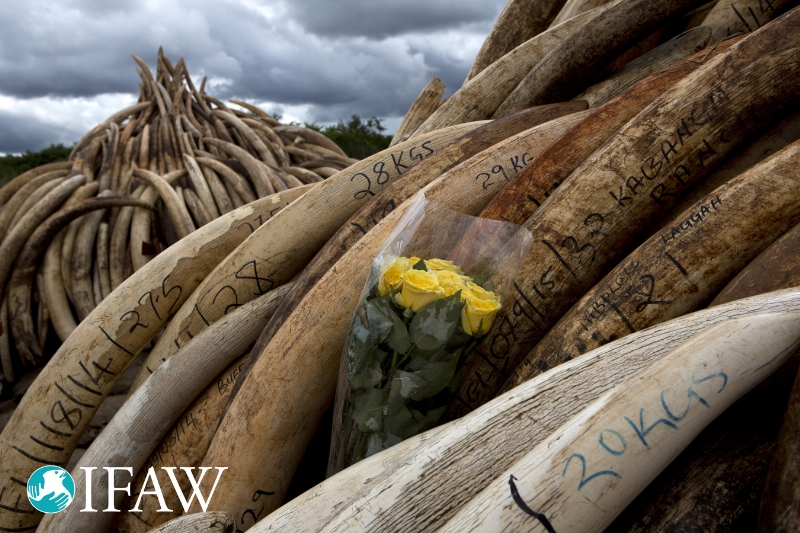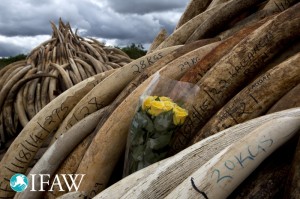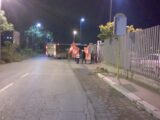Japan Agrees to Release a Whopping $116 Billion to Support its Economy It is evident…

IFAW: Largest ivory crush ever in Kenya sends message to poachers
02/05/2016Questo articolo è stato letto 5071 volte!

IFAW: Largest ivory crush ever in Kenya sends message to poachers (PRNewsFoto/International Fund for Animal W)
NAIROBI, Kenya, April 30, 2016 /PRNewswire-USNewswire/ — Plumes of smoke drifted over Nairobi National Park today as Kenyan authorities torched 105 tonnes of ivory and 1.35 tonnes of rhino horn – the largest single quantity of ivory to be destroyed anywhere in the world.
“It is a massive quantity of ivory, representing all of Kenya’s ivory stockpiles, apart from those retained as criminal exhibits, for posterity, education and scientific research,” said James Isiche, Regional Director International Fund for Animal Welfare (IFAW) East Africa.
“By burning this ivory and rhino horn and putting it beyond use Kenya has sent a very powerful message to criminals that they are absolutely serious about cracking down on trade in illegal ivory and rhino horn trade which, in turn, fuels the poaching that is decimating elephants and rhino populations.”
Since 1989, Kenya has destroyed over 30 tonnes of ivory. In March 2015, His Excellency President Uhuru Kenyatta set ablaze 15 tonnes. His two predecessors, Presidents Mwai Kibaki and Daniel Moi destroyed five tonnes in 2011 and 12 tonnes in 1989 respectively. The burning of the 12 tonnes in 1989 captured media attention and helped lead to the international ivory trade ban in 1990.
Today’s historic occasion was witnessed by three sitting Presidents, their Excellencies Ian Khama of Botswana, Ali Bongo Ondimba of Gabon and Yoweri Museveni of Uganda who together with their host His Excellency President Uhuru Kenyatta of Kenya set alight four of the 10 ivory pyres.
The presidents had earlier in the day concluded a two-day inaugural summit as members of the Giants Club. The Giants Club is an exclusive forum that brings together African Heads of State, global business leaders and elephant protection experts to secure Africa’s remaining elephant populations and the landscapes they depend on.
Azzedine Downes President and CEO IFAW who attended the Giants Club Summit as a leader in elephant conservation, also witnessed the historic ivory disposal.
“The ivory and rhino horn disposal we have witnessed today is truly a remarkable event in the continued fight against ivory and rhino horn trafficking. By destroying the largest ivory stockpile, Kenya has again demonstrated that the only valuable ivory and rhino horn is on a live animal,” he stated.
Since 2011 more than 100 tonnes of ivory have been destroyed by 18 countries: Belgium, Cameroon, Chad, China (including Hong Kong), The Republic of Congo, Ethiopia, France, Gabon, Italy, Kenya, Malawi, Malaysia, Mozambique, Philippines, Sri Lanka, Thailand, UAE and the U.S.A.
Despite these victories, ivory trade is pushing endangered elephants towards extinction. Every year, 25,000–30,000 African Elephants are poached to supply the ivory trade. Ivory seizures continue to increase with 24.3 tonnes in 2011, 30 tonnes in 2012, 41.5 tonnes in 2013, 17. 8 tonnes seized between January and August 2014 and 32 tonnes in 2015.
Most illegal ivory is destined for Asia, in particular China, where it has soared in value as an investment vehicle and is coveted as “white gold.”
The 2013 IFAW report, Criminal Nature: The Global Security Implications of the Illegal Wildlife Trade,documents the threat the illegal wildlife trade poses to elephants, rhinos and people.
About IFAW (The International Fund for Animal Welfare)
Founded in 1969, IFAW rescues and protects animals around the world. With projects in more than 40 countries, IFAW rescues individual animals, works to prevent cruelty to animals, and advocates for the protection of wildlife and habitats. For more information, visit www.ifaw.org. Follow us on Facebook/IFAW and Twitter @action4ifaw


